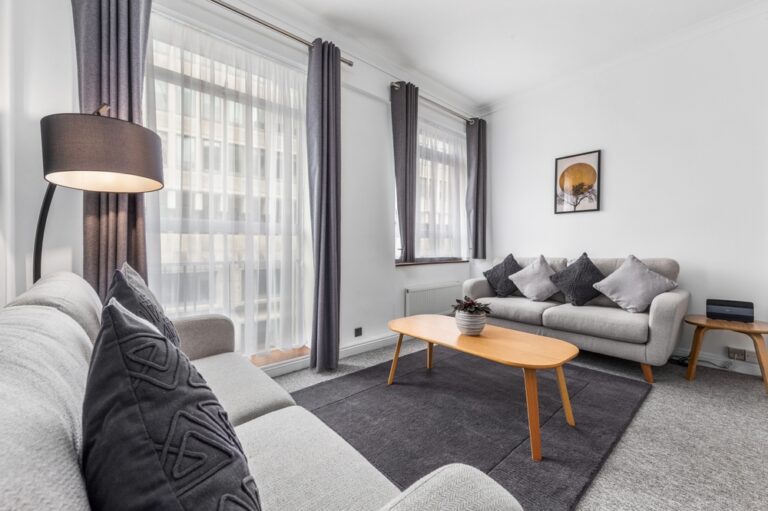Selling a leasehold property is slightly different to selling one on a freehold basis.
You’ll need some additional documentation and potentially the services of a solicitor experienced in leasehold sales.
“Selling a leasehold property can seem daunting, but with the right approach and help, it needn’t be so,” says Rob Smith, Managing Director of Parkers.
“However, there are some potential hurdles to get over when selling a leasehold flat or apartment and this guide explains everything you need to know.”
What is a leasehold property?
In the UK, most flats and apartments are owned on a leasehold basis, as well as Shared Ownership houses.
This means that while you’ll own the property itself, the land it stands on the communal areas are owned by a freeholder.
When you own a leasehold property, in most cases you’ll pay ground rent and service charge to the freeholder, who will use this cash to maintain the common areas and the building itself.
Leasehold properties come with a lease term – this is how long you have the right to stay in the property as a leaseholder before the ownership transfers to the freeholder.
While this sounds scary, it rarely happens as extending a lease is the statutory right for all leaseholders as long as you’ve owned your property for at least two years.
Can you sell a leasehold property?
You can sell a leasehold property just as you would any other property.
However, when you do sell, the lease agreement and term is passed to the new owner and they must abide by the terms and commitment to pay any charges laid out by the freeholder.
Is it hard to sell a leasehold property?
Selling a leasehold property can be harder than selling a freehold home, simply because there is a lease agreement involved.
However, if the length of your lease is long and you have all the documents a buyer would need ready to go, there’s absolutely nothing to fear from selling your property.
How to sell a leasehold property
There are some key steps you’ll need to take before you put your leasehold property on the market:
1. Find out your property’s value
The first step when selling any property is to have it valued by an estate agent.
Your local agent will consider sale prices of other, similar properties in your area, as well as the general property market at the time.
They’ll also look at any improvements you’ve carried out and give you an accurate valuation so you can decide on your asking price.
2. Study your lease and check how long is left
The major difference when selling a leasehold home compared with a freehold property is the existence of a lease term.
Before you get too far along the process of listing your property, you should understand the length of time that remains on your lease agreement.
Generally, the longer your lease, the easier it will be to sell your property.
Any length of time under 80 years is considered a ‘short’ lease and this could impact the value of your property.
It could also affect a buyer’s ability to get a mortgage, as lenders are reluctant to approve applications for properties with short leases.
3. Get your documentation up together
The documents you’ll need to sell your leasehold home include:
- A copy of your lease agreement
- A leasehold information pack or TA7 form
The TA7 form or leasehold pack contains all the information a buyer’s solicitor will need in relation to your property, including:
- The cost of any service charges
- Ground rent fees
- Additional maintenance fees or funds
- Plans for work on the freehold building
- The freeholder’s building insurance policy
Because leasehold packs come from the freeholder, you’ll be relying on them to provide the information in a timely fashion.
So, always look to have this up front before you list your property.
Selling a leasehold Shared Ownership property is a slightly different process, but our Shared Ownership guide explains everything you need to know.
4. Speak to your local agent
As soon as you have your documentation up together and you’re confident your lease is long enough, you should speak to your local agent about listing your property.
Your agent should have experience in selling leasehold properties and be able to help you through the process.
5. Arrange the right solicitor
Hiring a solicitor or conveyancer with solid experience in selling leasehold properties can really help to keep your sale on track.
If any problems crop up with your lease, or your buyer’s solicitor requires more detailed information on their behalf, a good leasehold solicitor will be able to help.
What to do if you have a short lease
If you have fewer than 80 years remaining on your property’s lease, it doesn’t always mean you’ll be unable to sell.
The options you have are:
1. Try to extend the lease
As long as you’ve owned your leasehold home for more than two years, you have a legal right to a lease extension.
The cost of extending your lease could vary depending on the value of your property and the time that remains on the existing lease.
So, always speak to a solicitor first and seek advice on the best approach.
If you’ve lived in your property for less than two years, you can still approach your freeholder directly and ask for a lease extension.
2. Purchase the freehold
If your freeholder is willing, you could look at purchasing the freehold of your property, giving you more control over the lease.
If you live in a building with lots of other leaseholders, you could also consider coming together to collectively buy the building freehold.
There are advantages to doing this, but also some major considerations, including the extra responsibility of being a freeholder.
So, always get advice from your solicitor first.
What’s the timescale of selling a leasehold property?
The time it takes to complete the conveyancing stage of a leasehold property sale can be longer than with a freehold property.
Leasehold conveyancing is more work for your solicitor and tends to raise more buyer enquiries that need answers from your side or from your freeholder.
A simple leasehold sale shouldn’t take much longer than 10-12 weeks but more complex cases can take longer.
Can a freeholder force a leaseholder to sell?
A freeholder can’t force a leaseholder to sell their property, so long as they stick to the terms of their lease and there is time remaining on the agreement.
However, a freeholder may be able to take action against a leaseholder if they breach the terms of the lease, known as forfeiture.
Not all leases allow forfeiture proceedings to be used, however.
Some leases may contain a Licence to Assign clause, where you would need your freeholder’s permission to sell your property to someone else.
However, in most cases, leaseholders can sell to whoever they like and that person then has the right to live in the property as long as the lease allows.







